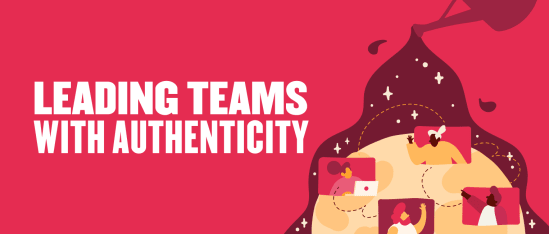There’s a common misconception that inclusive and healthy cultures are built around perks like ping-pong tables, free beer, nap pods, and games. But this couldn’t be further from the truth. Inclusive and healthy cultures are built on interactions between people that encourage them to forge lasting relationships with each other.
With that being said, another misconception is that remote and dispersed teams prevent companies from building cultures built on connections between people. But dispersed and remote teams that aren’t anchored to a specific office don’t have to compromise on culture. Instead, leaders need to shift their mindset and create an environment where people can build strong relationships using digital communications tools like Zoom and Webex.
The definition of exceptional company culture has moved away from perks and shined a new light on the fabric of the virtual environment and the team you build within it. When it comes down to it, professionals want to feel connected, cared about, and understood. If you can cover these, you’re off to a great start!
There are plenty of ways leaders can nurture a culture. In my experience as the leader of a globally dispersed team, I’ve found that these four remote leadership techniques are the keys to building close-knit, in sync, and bonded teams–without ever meeting in person.
1. Change your interview process
Before the world switched to remote and hybrid work, many leaders, including myself, would make a point of including a team culture fit interview in every interview process. This is where I would invite current team members to meet the candidate to build excitement about the team, put faces to names, and let our culture shine. Culture fit interviews are also a great way to have local team members give you their input on whether or not they feel the candidate would make a good fit.
This face-to-face process often didn’t translate to remote hiring processes conducted over Zoom calls. But, the culture fit is a crucial part of the interview process. We must evaluate it, even when we can’t meet in person.
When I hold remote interviews, my first priority is asking candidates questions that can help me determine if they’re the right culture fit for the team:
- What type of culture or learning environment leads you to be successful?
- Can you describe a team environment that really made you happy and motivated?
- What are some elements you look for in teammates?
Of course, everyone answers differently, but good leaders can always identify a few core responses that stand out in candidates with the right culture fit.
At HiBob, we always want people to check these boxes:
- They care
- They are curious/ask questions
- They believe a team is a unit
The list goes on, but I’m surprised when I hear that these questions aren’t a mainstay of the evaluation process for many hiring managers (or companies in general). This is paramount to the team you are building, and it’s why I ask myself and all hiring managers not just if a candidate has the skills but if they’re the kind of person who would fit well into our team culture.
A culture is a living, breathing thing. If you’re growing your team and introducing new elements to the environment, you should feel confident they’ll add to and reinforce the positive and healthy culture you’ve built for your people.
2. Do what works for you
Theodore Roosevelt famously said that “comparison is the thief of joy.” This is true in life in general. In a work environment, I let this guide me. The key to succeeding, especially in a remote team environment, is reinforcing a positive culture. Positivity can’t thrive if people compare themselves to others. The key here is looking at where and how you succeed, how you’re meeting results and hitting KPIs, and how these behaviors impact the team’s and individuals’ growth.
The most important thing is to be flexible. Don’t restrict your teams, remote or otherwise, to traditional modes of working. In today’s new world of work, 9-to-5 workdays don’t have to be the norm. Flexibility and freedom should. When people have the freedom to build their day around their specific needs, the quality of their output rises.
Flexible schedules empower people and boost output
For example, if a parent on your team needs to pick their kids up at noon and build their work schedule around this, it shouldn’t matter if they do the work at 12:00 pm or a bit later, after they drop their kids off. Empowering your people by giving them control of their time and how they spend it doesn’t mean managers lose control of the team. In fact, it boosts engagement and helps everyone on the team contribute to creating an environment that works for everyone, no matter when, where, or how they get their work done.
Give your people a high level of trust
As a leader, this approach has worked wonders for my teams. When trust is the foundation of professional relationships, people are more relaxed and focused. Why? Because they don’t have to stress about earning the privilege to be their authentic selves at work.
I’ve worked with amazing people around the world who’ve needed to block off parts of their schedule to tend to their families. Because we have a culture of open communication and honesty on our team, people simply let me, as their manager, know when those times are. The result? We never have to have conversations about completing tasks on time.
Every team member loves the freedom. They’re also more motivated to close the loop and finish outstanding tasks ahead of time because they appreciate the freedom and don’t want to take advantage of it. When we build cultures on honesty, trust, and flexibility, people feel more connected to your mission because they know they’re respected and seen as real people with equally important obligations at work and home.
This brings me to the next technique.
3. Lead with empathy
Leading with empathy is simple. But, with the pressure of meeting goals and managing tons of tasks, many managers forget about this essential element when dealing with their teams. As leaders, this is something we need to work on.
It’s easy to get trapped in a bubble and view our teams as well-oiled machines focused on KPIs and meetings. Every team member significantly impacts the team’s goals and output. But people have whole lives outside of the work ecosystem. Respecting their time and non-work lives has an even greater impact on their enthusiasm, engagement, and productivity.
Effective leadership means being sensitive to individuals’ needs
Remote work affects everyone differently. It’s important to understand that each person has different challenges and that every challenge is valid, even if it’s very different from yours. Remote work has brought great freedom to professionals around the world, but it’s also been incredibly taxing for some.
For many, working from home has blurred the separation between being a parent and a professional. Similarly, the line between working hours and personal time has become ambiguous: People have a hard time logging off and find themselves working long after hours and on weekends. This has led to massive burnout and, ultimately, resignations. It’s our job as leaders to be sensitive to this reality.
When you talk to your team, don’t just focus on KPIs. Encourage everyone to speak honestly about how they’re feeling. Showing that you care and see them as valued professionals–but people first–will help create a work environment where people feel safe. Some will respond by opening up about more personal topics. Some will just be happy to feel understood.
A great example of this happened recently. I had a regularly scheduled one-on-one with one of my team members. They expressed that they were overwhelmed by a lot of things going on with their kids. We had a few topics to cover in the meeting, so I prioritized. Instead of holding the meeting and reviewing every KPI, I let them take the extra 15 minutes we would have spent speaking to be with their kids and sort out any issues before returning to work.
Small gestures like this one show your team you understand that work-life balance isn’t black and white. You may need to find creative ways to synergize and make it work. This is just one example where a small bit of empathy for a personal situation allowed a valued team member to breathe.
4. Prioritize diversity of thought
It’s natural for leaders to follow known patterns of success. For example, when recruiting new team members, hiring managers may fall into the trap of “when you find something good, repeat it.”
This can be a great strategy. After all, you know that you want all team members to have a specific skill set. But, it can also be dangerous if you apply it too broadly.
Diverse teams are stronger
As a leader, it’s your responsibility to identify and fill the gaps in your team’s skill set.
If you have a team that’s really strong in sales but not great at retention, you want to hire new team members with skills that fill the gaps. The ultimate team has people with various strengths who can work together and learn from each other.
Recommended For Further Reading
Diverse perspectives challenge the status quo and promote agility
Team diversity extends far beyond people’s skill sets. Even more important is building a team of people from myriad backgrounds and with different experiences. If done correctly, you’ll build a team of people who not only have a variety of skills but who challenge the status quo and view things from different angles.
If everyone on your team comes from the same industry, has the same skills, and thinks the same way, your competitive edge is limited. Creativity and multiple perspectives create strong, agile teams.
This diversity of thought and experience is fundamental to creating a work culture and environment where people feel safe and free to be themselves. If they can share their opinions and challenge existing processes, they’re more likely to feel comfortable being their authentic selves at work.
The key to great remote work cultures is connection
If there’s one thing to take away from remote working, it’s that maintaining a great culture across dispersed teams is a lot simpler than it might look. When our teams have to adjust to huge shifts in our modes of working, it’s important to get back to the basics.
Trying to come up with the next generation’s ping-pong table is overthinking it. At the core, building a great culture is about creating a space where people can genuinely connect with each other. The conversations people have are the essence of strong, healthy cultures, whether people sit next to each other or talk through a Zoom screen.
When we understand this, Zoom meetings no longer seem so intimidating. You can create the same person-to-person, relaxed conversations over a webcam. You may have to work harder to fill some gaps or work through bad internet connections–but building amazing relationships and memorable moments is 100 percent possible.
Ask quick, non-work questions to start team meetings. Or hold virtual team events or Happy Hours. Mostly, though, make sure your one-on-one time isn’t just about KPIs. It’s about learning what’s going on in your people’s lives. Don’t overthink it. You can accomplish a lot just by being thoughtful.

From Duncan Pratt-Stephen
Duncan is HiBob’s director of customer success in North America and has spent the majority of his career building unique and sustainable cultures for international companies looking to move into the Americas. When not geeking out about CS or books around culture, he’s watching one of the NY-based sports teams or buried in a good book!

